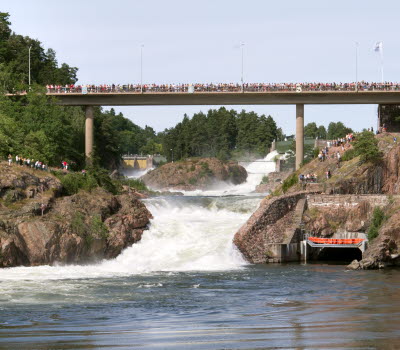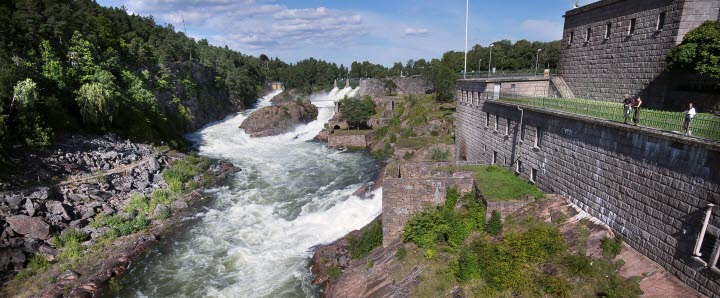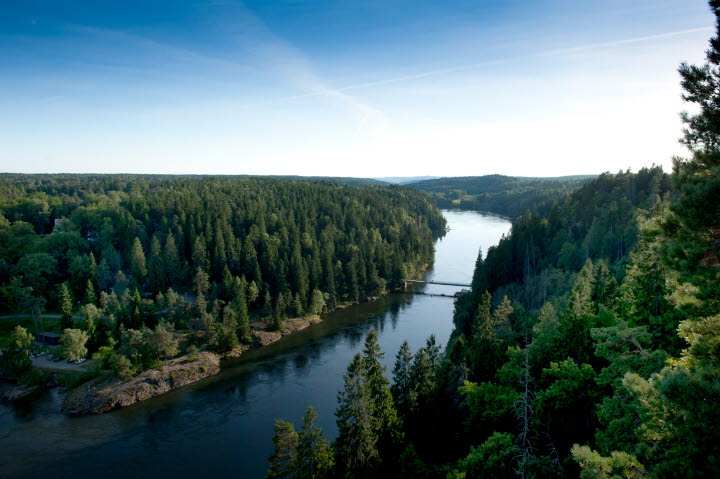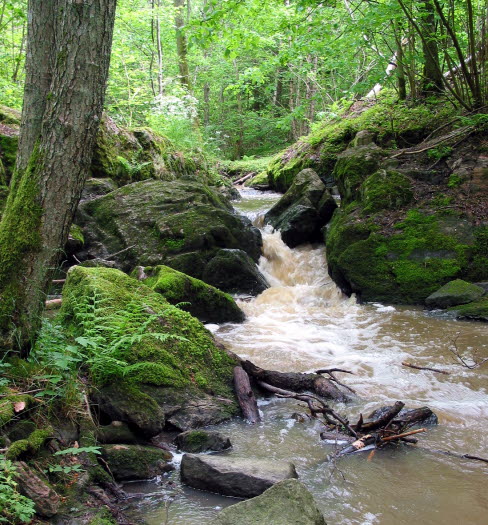Slättbergen Nature Reserve
Trollhättan
Slättbergen Nature Reserve may not be so remarkable the first steps, but then it is easy to lose speed and stand still. Can it look like this? At three larger areas in Trollhättan, the flat bedrock surface that was formed over 600 million years ago can be seen. The flat rocks are not only unique for Trollhättan, but also for Sweden and the rest of world!
Welcome to Slättbergen Nature Reserve
Experience Slättbergen Nature Reserve and its unique nature. Here you can roam freely, study plants and animals and enjoy the diversity. The flat boulders form part of a very old bedrock plain and is very popular by joggers and strollers. This so-called peneplains has been estimated to be more than 570 million years old. These flat basement rock has been under a kilometer-thick layer of sedimentary rocks. Water, wind and ice sheets have slowly worn away the protective cover and finally exposed the rock. The nature conservation area Slättbergen comprises the three areas: Eriksroparken, Hjortmossen and Sandhem-Halvorstorp.
The shape of the rocks
The landscape was formed by constructive and destructive forces. The constructive forces formed mountain chains and volcanoes, while the destructive forces broke down the mountains into gravel, sand and clay which, with the help of water, were washed out into the sea. If only destructive forces worked on the earth's surface, all differences in altitude would eventually level out. In theory, the earth's land areas would, over time, develop into extremely flat surfaces at sea level, so-called peneplains. But since the continents are moving, land masses are constantly being pushed together into new monuntain ranges. Volcanoes also contribute to the forming of new mountains so it is unlikely that the earth will ever become completely flat. However, some periods during the geological development have been calm which gave the erosion free play over a long period, with flat mountain plains as a result.
Traces in the rock
The ice sheet and weathering have created different shapes in the rock. They are best seen if you visit the area when the light is fading.
- Several of the flat surfaces have been transformed into round hobs with a flat top. It has a flat, ground side to the northeast (windy side) and an uneven or transverse side to the southwest (sheltered side).
- Here and there are shallow pits and furrows in the rock, so-called glacial troughs. After the ice age, weathering has deepened the troughs further.
- Ice grooves can be seen as elongated scratches in the rock. They were created by rock fragments embedded in the ice cutting into the bedrock.
- Ridges and grooves were also formed due to minerals in the bedrock differing in their resistance to weathering. The ice grooves in the gneiss has by that been strengthened.
- On sloping hobs there are sometimes simple or branched furrows. They have been formed by chemical weathering where water has passed over the hob.
- In some places you can see loose, thin flakes of rock. The phenomenon is known as exfoliation and is created when weathering forces the top layer of rock to detach from the surface.
Natural environment of the reserve
Within the three areas there are several different habitat types, but many features are common. The reserve is characterized by the nutrient-poor bedrock and the thin or non-existent soil cover. Here and there in the barren pine forrest you encounter heather, blueberries and mat-grass. In the fissures and in the thin soil you can find sheep fescue, carnation sedge and heath grass. Typical herbs are rock campion, narrow-leaved hawk's-beard and orpine. Large areas are also dominated by lichens, such as star-tipped reindeer lichen, reindeer lichen, tree reindeer lichen and Iceland moss. Where the rock is flat, rainwater can collect in smaller troughs and depressions. In the slight fissure valleys between the flat rock surfaces there are small bogs with sallow, bog myrtle and purple moor-grass, or more enclosed stands of alder swamp forest. In the areas there are many different birds and animals. At dawn and dusk you may be lucky enough to see hare, squirrel, badger, deer and hedgehog.
Read more about Slättbergen Nature Reserve here, and download the pdf with maps here!
Latitude and longitude to the three sub-areas of the reserve:
Eriksro 58 ° 15.833'N 12 ° 16.940'E
Hjortmossen 58 ° 16.683'N 12 ° 17.588'E
Sandhem-Halvorstorp 58 ° 16.923'N 12 ° 19.995'E
Samhällsbyggnadsförvaltningen
Gärdhemsvägen 9
461 83 Trollhättan
Phone: +4652049 67 77
E-mail: Send e-mail
Website: To homepage













